Creating a Certificate with Print Merge in CorelDRAW
The Powerful Tool That Allows You to print “merged database content” in CorelDRAW
In this tutorial you will learn how to use the print merge tool. This useful tool allows you to automate the personalized pieces like names, dates, and folios, although it is a tool that has been in CorelDRAW on Windows, now we can explore and exploit it to the maximum in CorelDRAW on Macintosh and that it lays a solid base that would allow users of other software to know the capabilities of our suite.
Before you start your project, here are a few things to consider:
- The Print Merge is a tool natively included in CorelDRAW.
- It can work with two types of data (numbers or text).
- You can create the fields manually or automatically by importing a database.
- There are no restrictions on how many data fields you have.
- You can create a single file with all the variations or new documents from the Print Merge tool automatically.
- Text fields act like any other text in terms of their justification settings, size, color, etc
Now that that is covered let us start using this tool.
The following example will be based on the customization of a certificate using the following fields:
- A. Name
- B. Course name
- C. Certificate number
- D. City
Set up your design file
The first step will be to determine the design and location of the data fields in our design, remember that your document must be configured to the final print size, in this case it is half letter (8.5x5.5 ”) with the fields mentioned above.
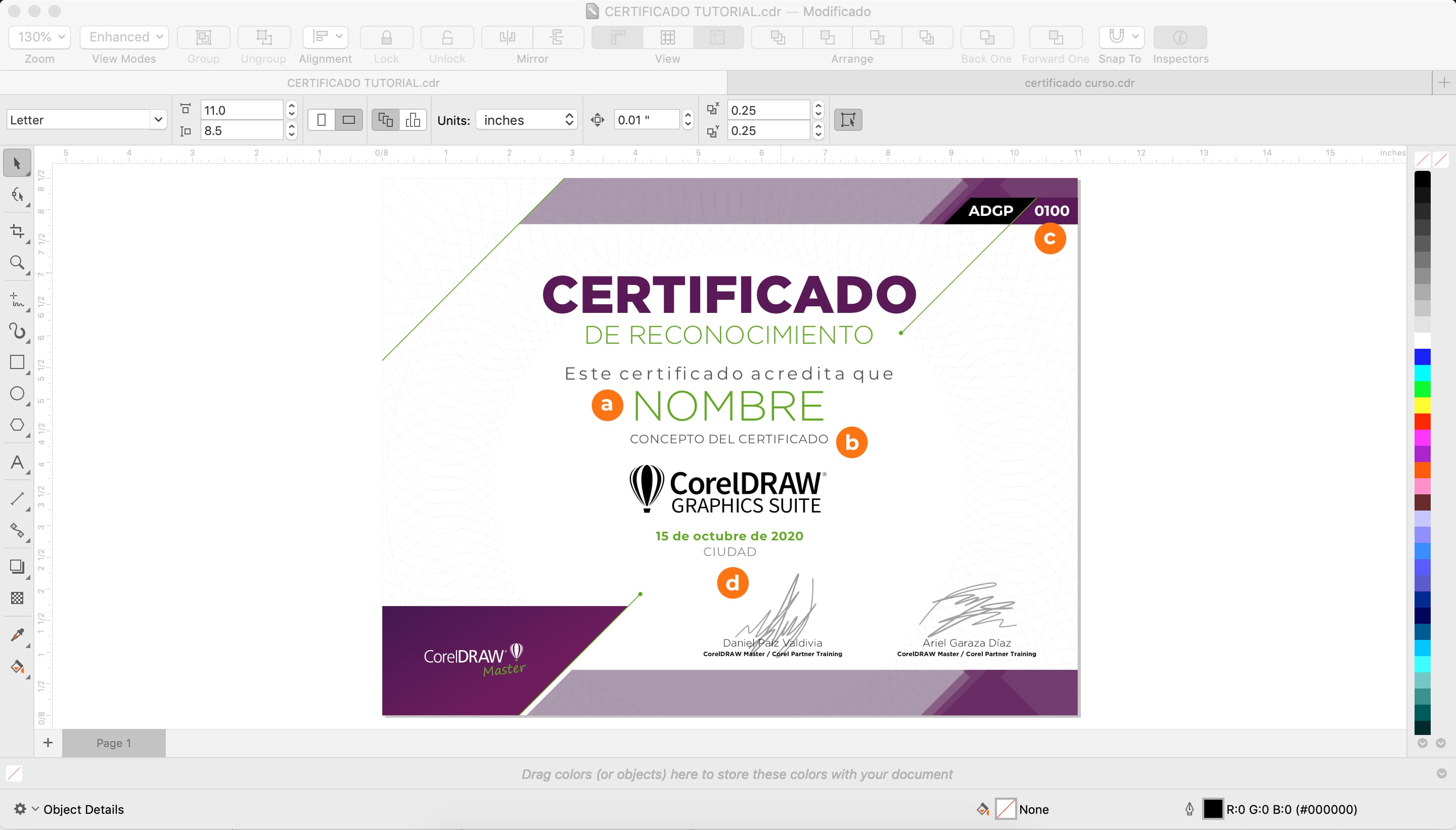
Now that we have the design, let's look at how to create the database file. You will need a basic text processor on Mac such as TextEdit.
CorelDRAW recognizes text that is separated by a coma (,) as different columns. For this certificate example you will need to set it up in the following way:
NAME, COURSE NAME, CITY
I recommend the first line of our text file has the names that we need the merge fields to have, so I left them as in the example and save as TEXT WITHOUT FORMAT (* .txt).
Next is to add the records, one per line and a “,” separating each field, for example. As for the Certificate number, we are going to have the Print Merge feature automatically add those to the records
George Slate, Basic Computers 101, Pomona
Merial Blade, Advanced Typing, Sicily
Once you have all the records created, save the file out as plain text you and then you can go ahead to Print Merge.
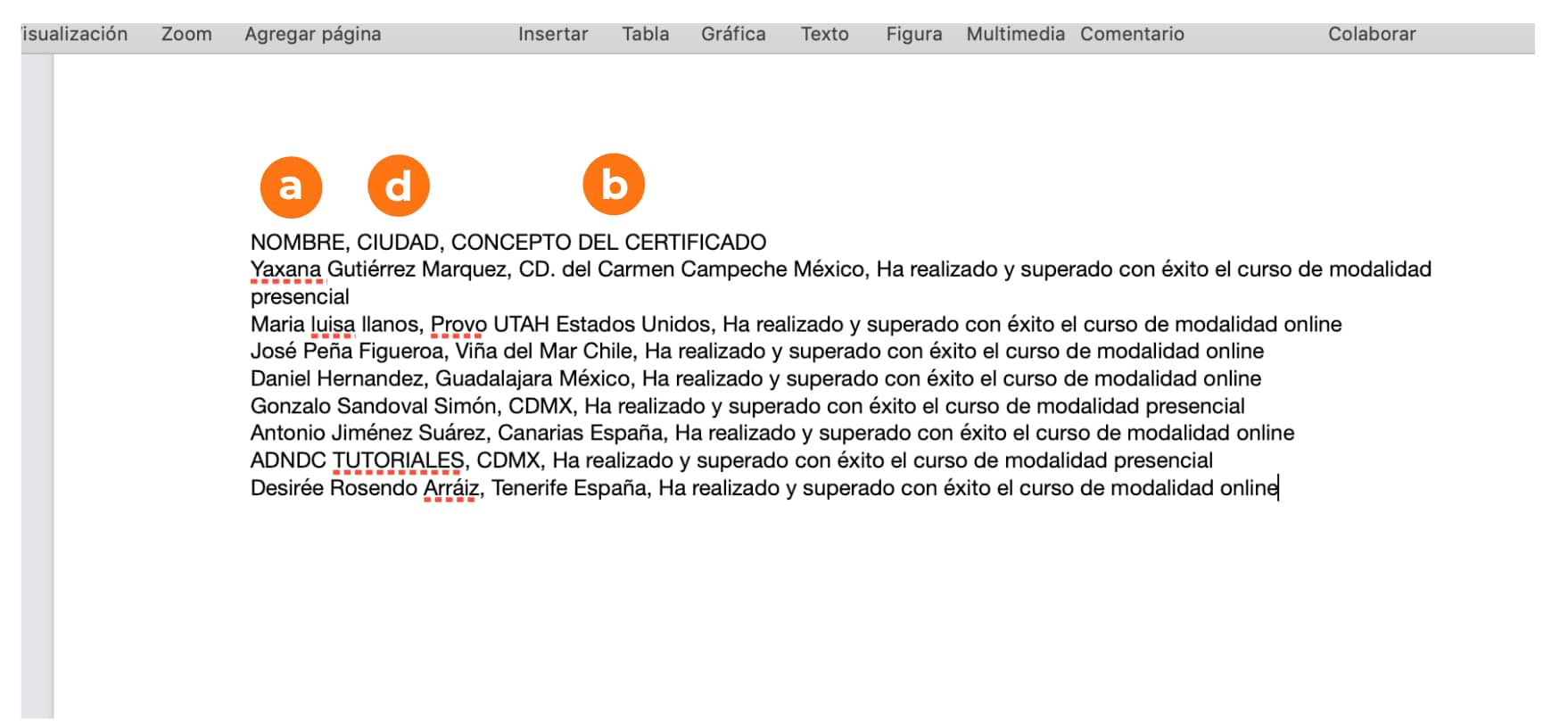
To do this we go to File > Print Merge
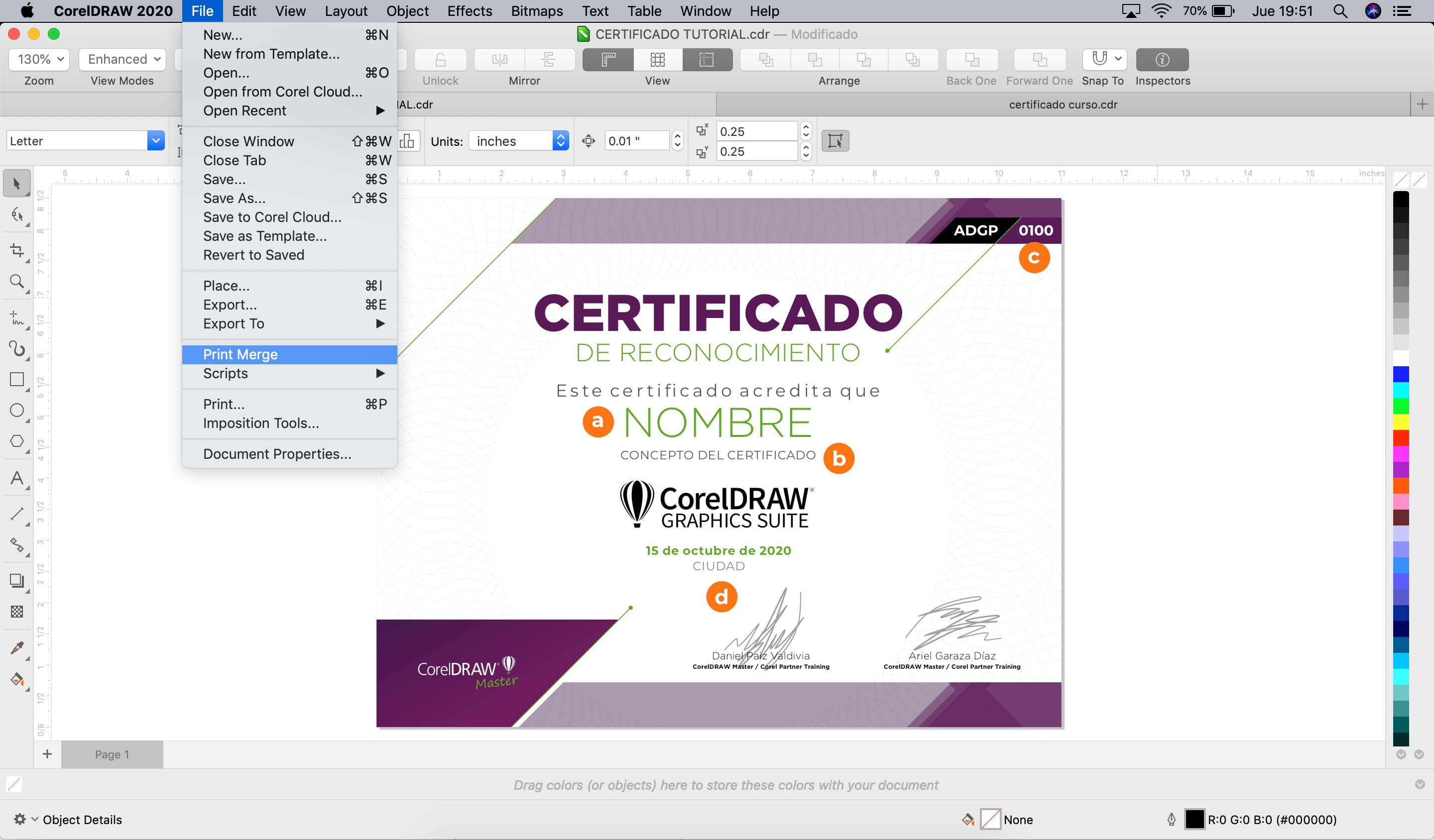
This brings up the Print Merge dialog box.
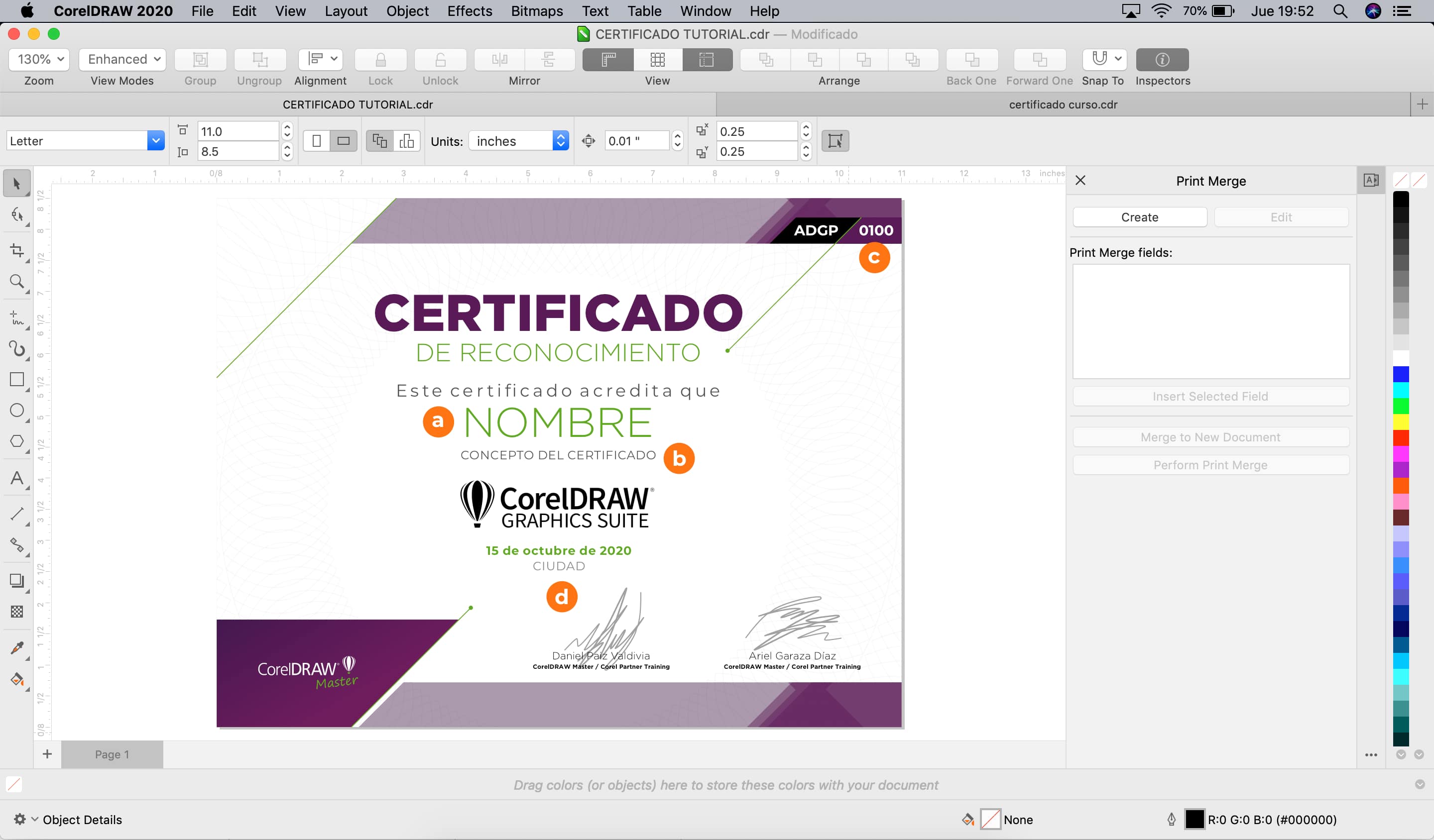
Click on the CREATE button in the dialog box and the Print Merge window will be displayed.
Here you can either create your records from scratch by entering the column headers and entering the data or by importing your records from a text-based file. Click the Import File button. Browse to the file that you have created This will save you a lot of time so you can concentrate on the fun part, the creative design.
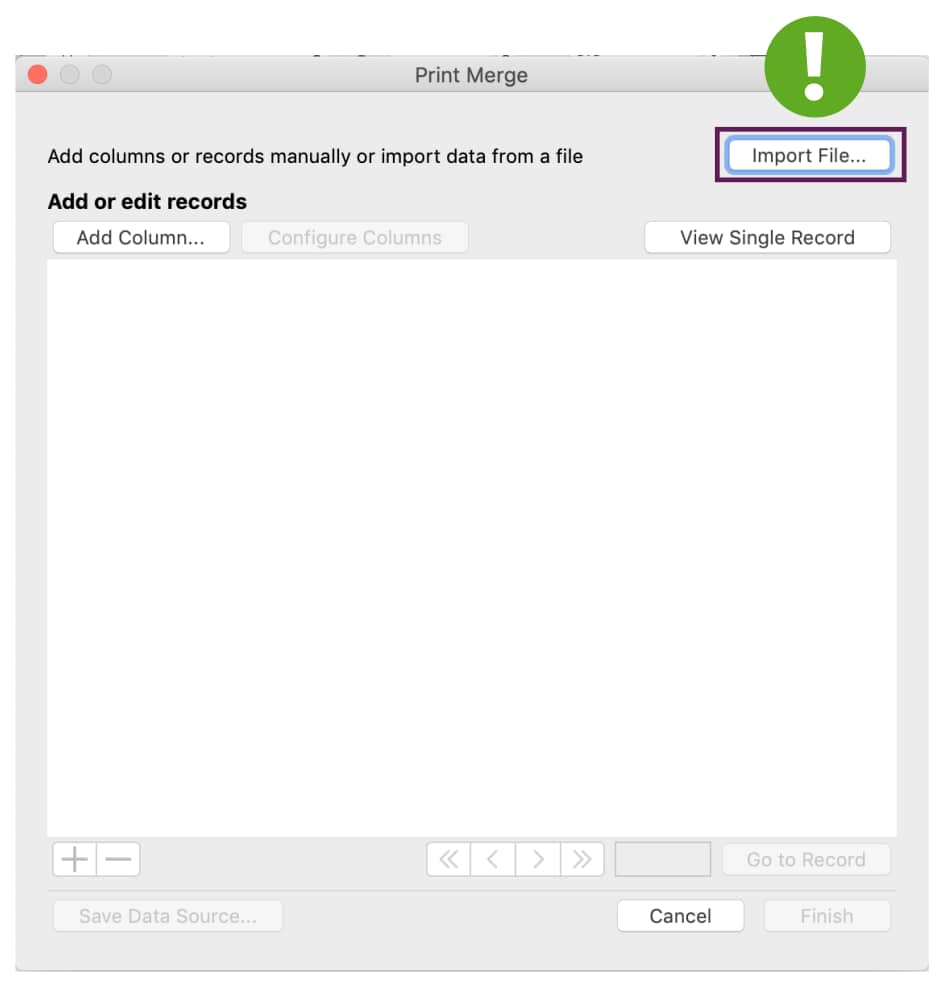
Once the file has been imported, you will see the fields and associated data.
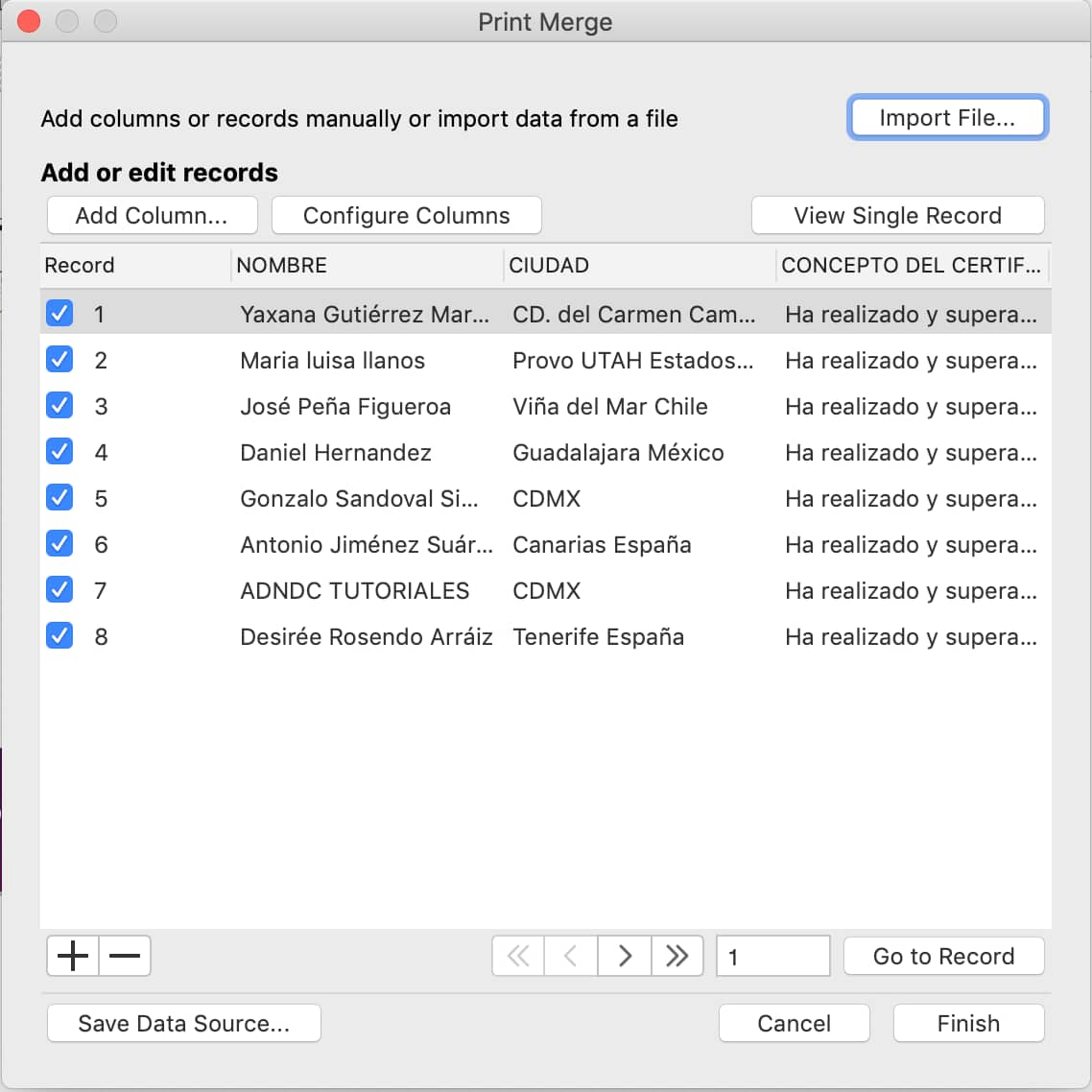
The next step is to add the Certificate Number field by clicking on the Add Column button. Select "numeric" and setup the format that you want your data to be displayed. Also, you can decide the starting value (it can be whatever you want) and the final value when you are ready click the Add button. Once this is done, you can disable any of the numbers created if necessary.
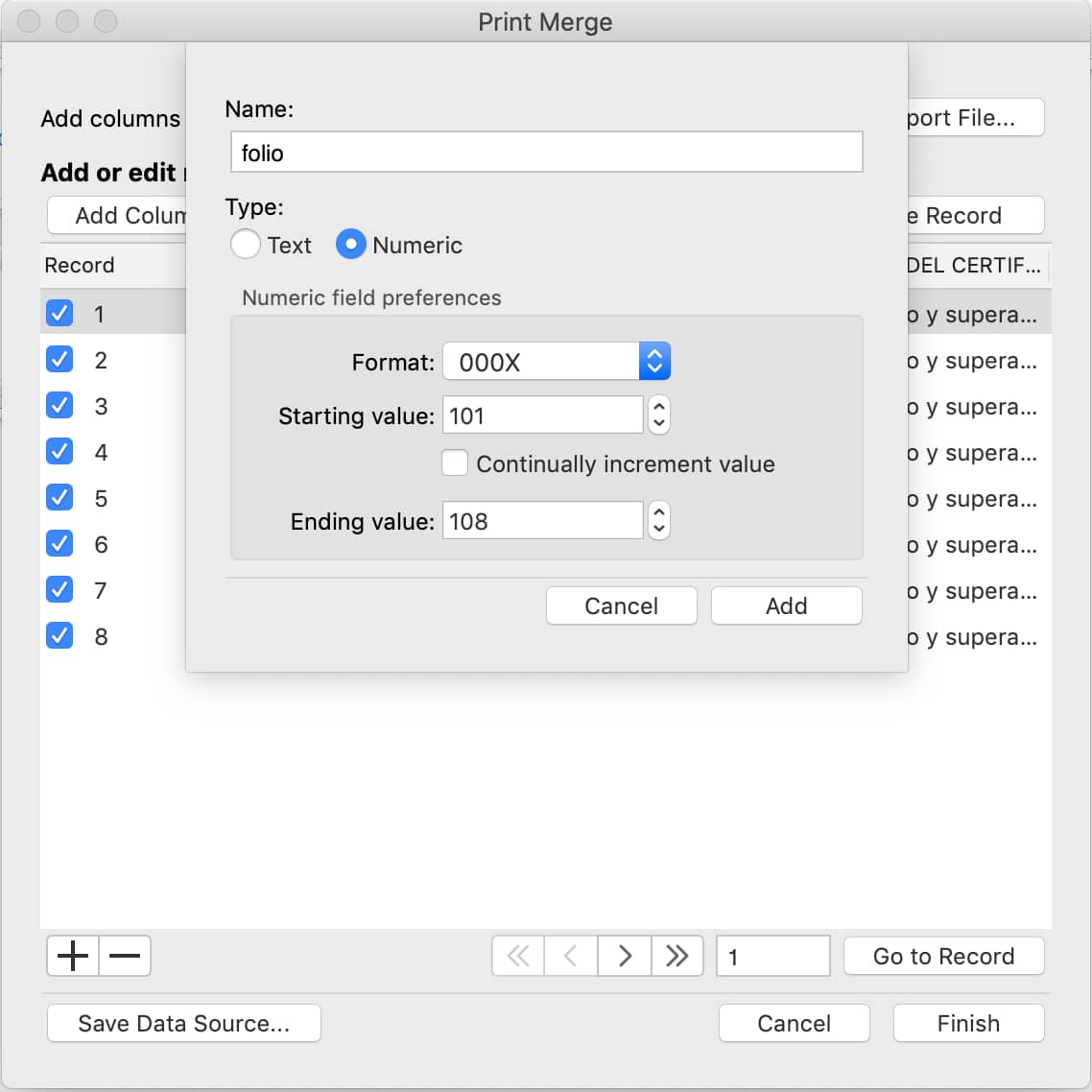
And now that your fields are ready click on the finish button.
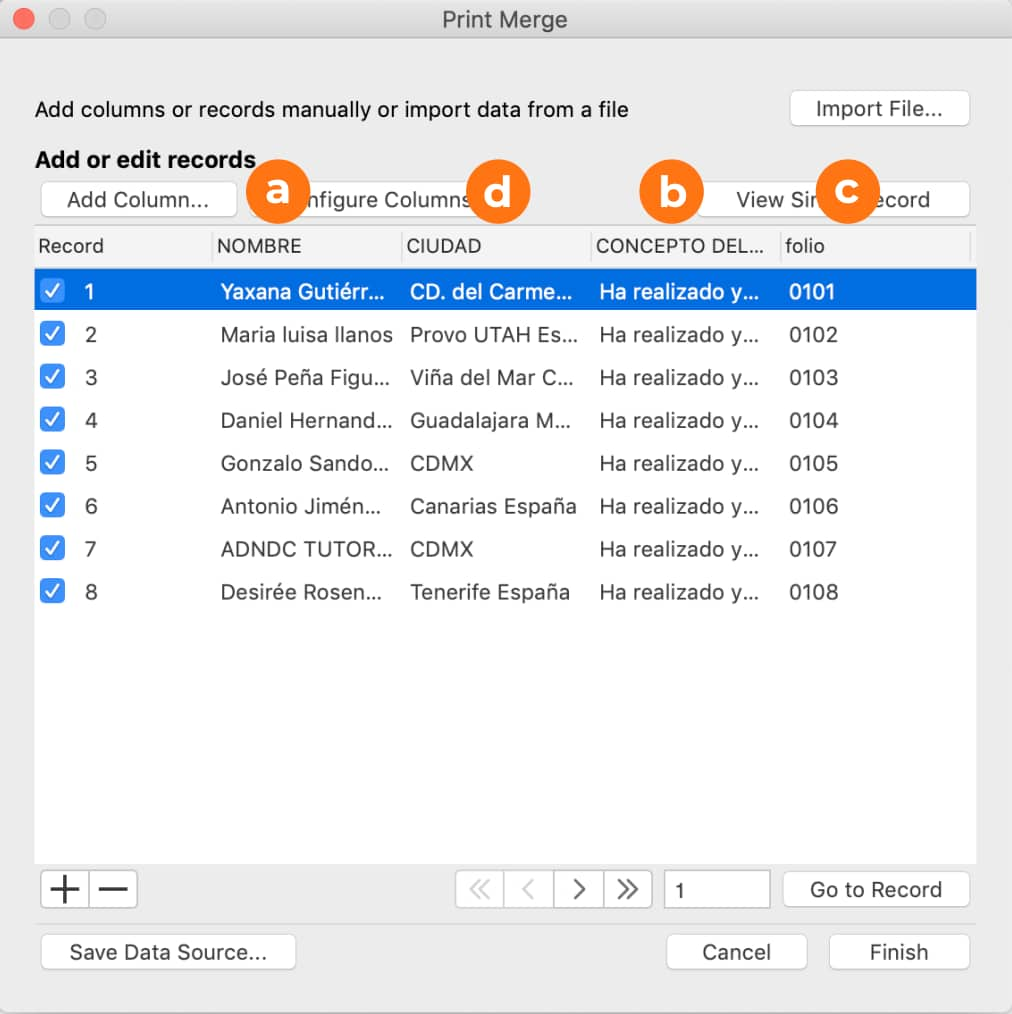
You now see the list of fields that you created in the Print Merge dialog box. One by one you will select the fields and click on Insert Selected Field to place them into your document.
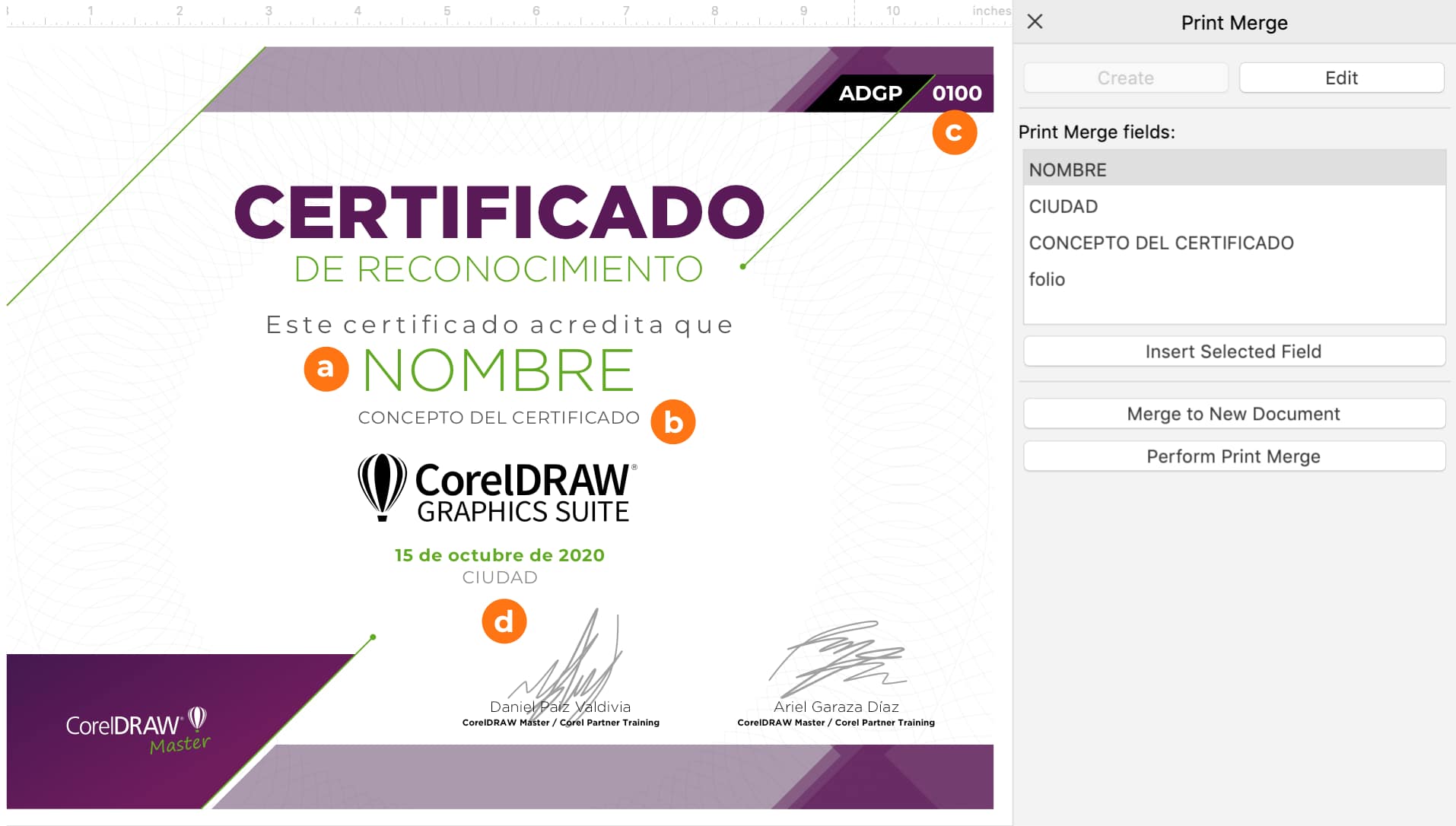
Now that all the fields have been inserted, you can format the text, just as you would any other text, buy changing color, font, and size to suit your needs.
If you have used placeholder text, before the print merge, you can use the attribute dropper to copy the text characteristics of the placeholders and apply them to the merge fields quickly.
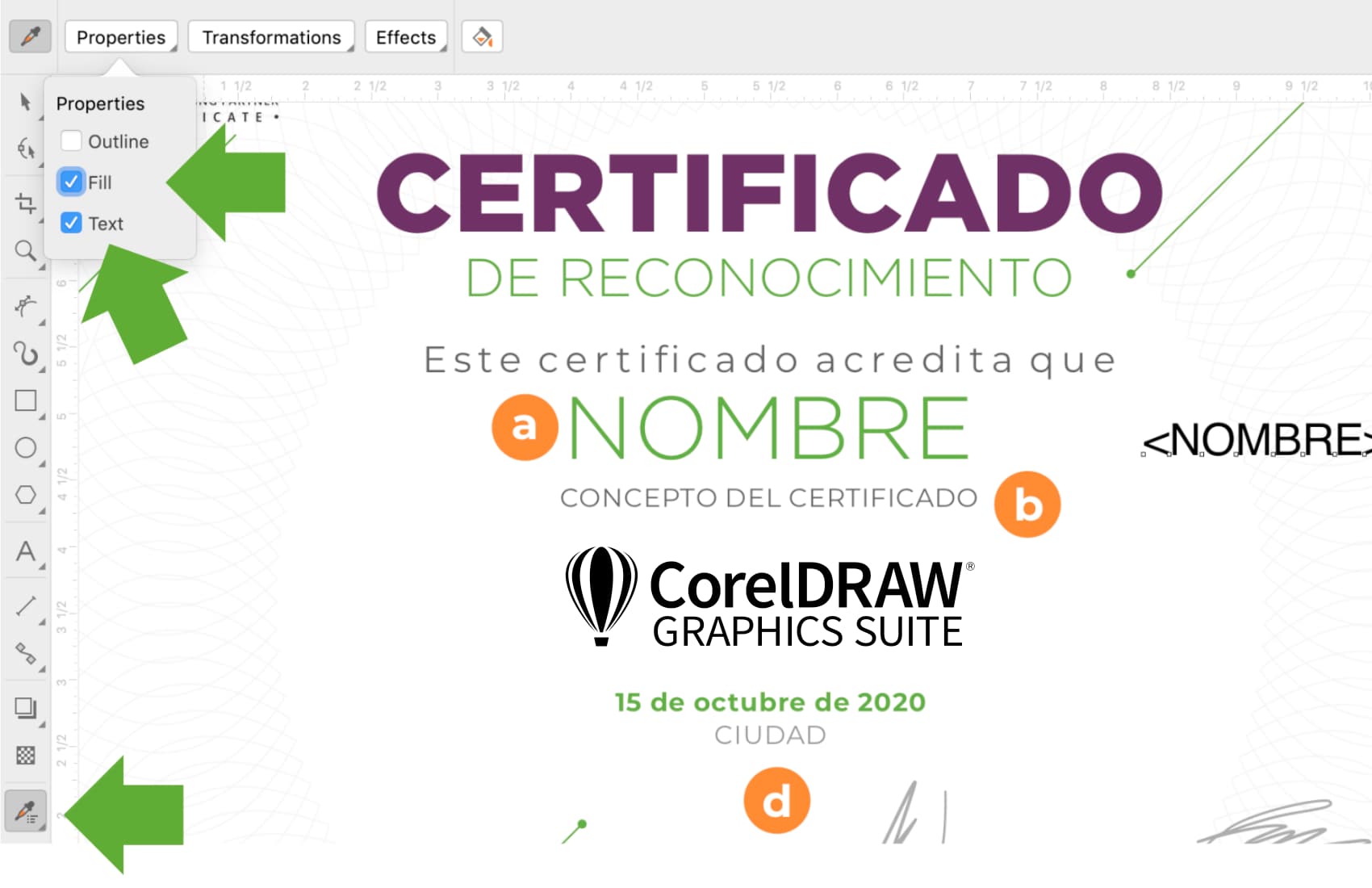
Don’t forget since they are text fields these will expand depending on the information contained so in this case I am going to center align my text to prevent the content from leaving the page.
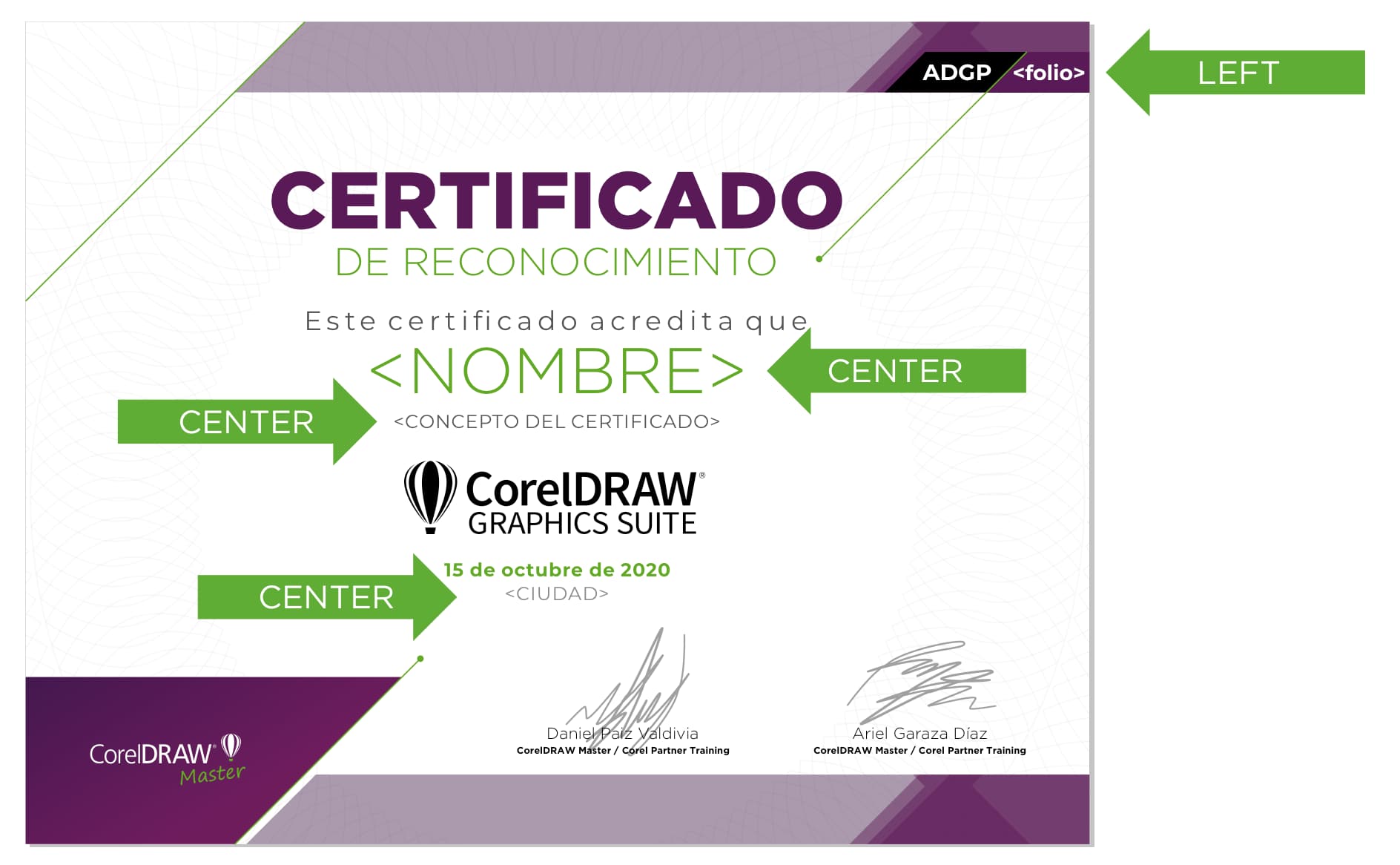
Once you have completed the editing and placement of the fields, you have a couple of options.
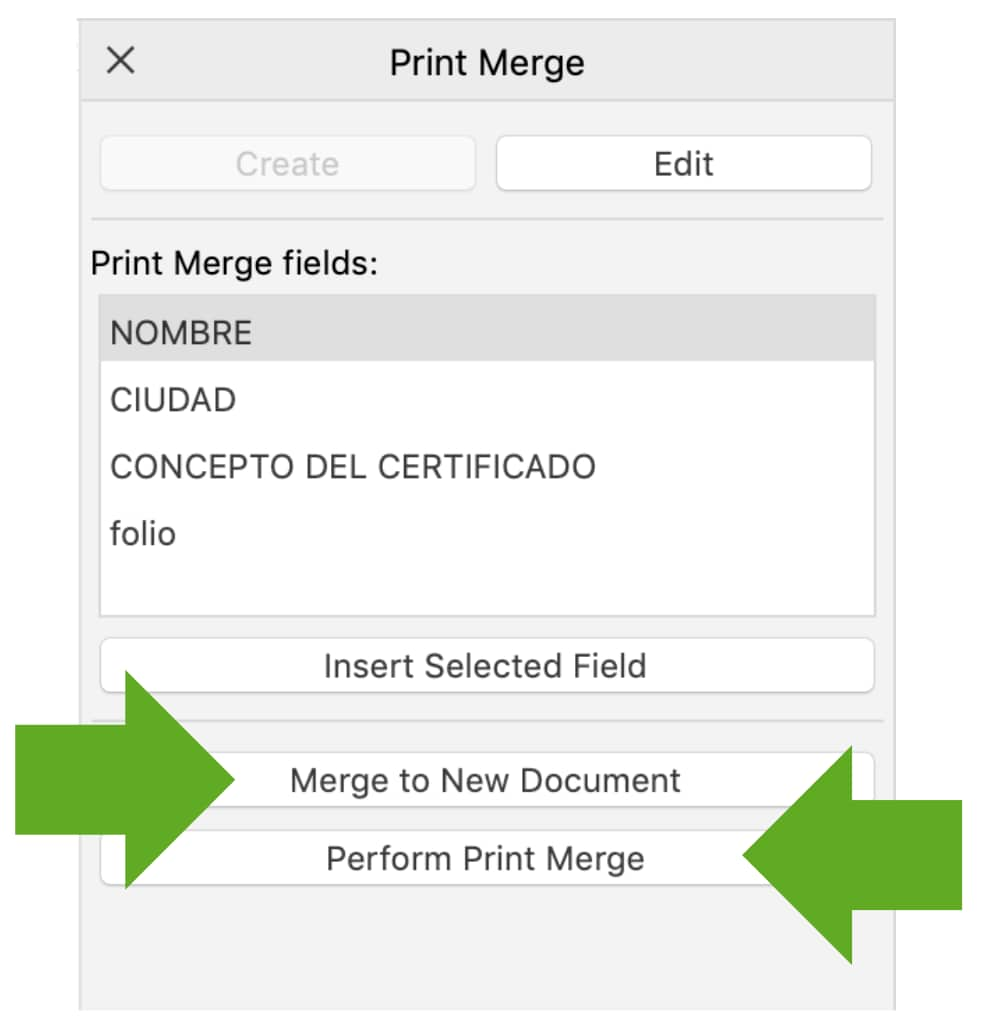
Preform Print Merge which will bring up the print dialog box, allowing you to set your printing preferences and print.
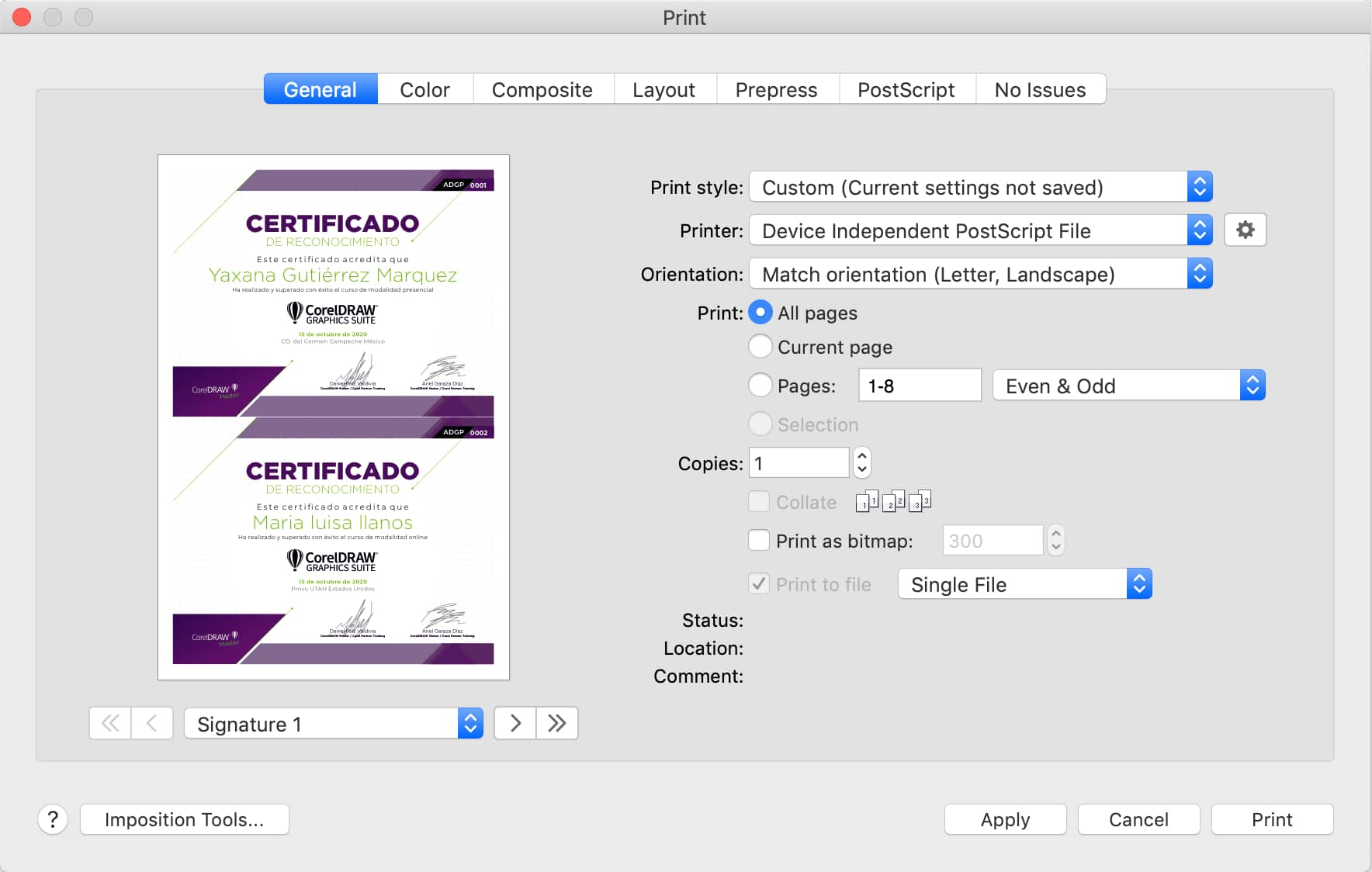
The second option is to select Merge to New Document, this will create a new CorelDRAW document containing the certificates, 1 on each page, which you can then save as .CDR or any other format that you may need. I highly recommend this choice because you can easily view each certificate and make edits as needed before printing.
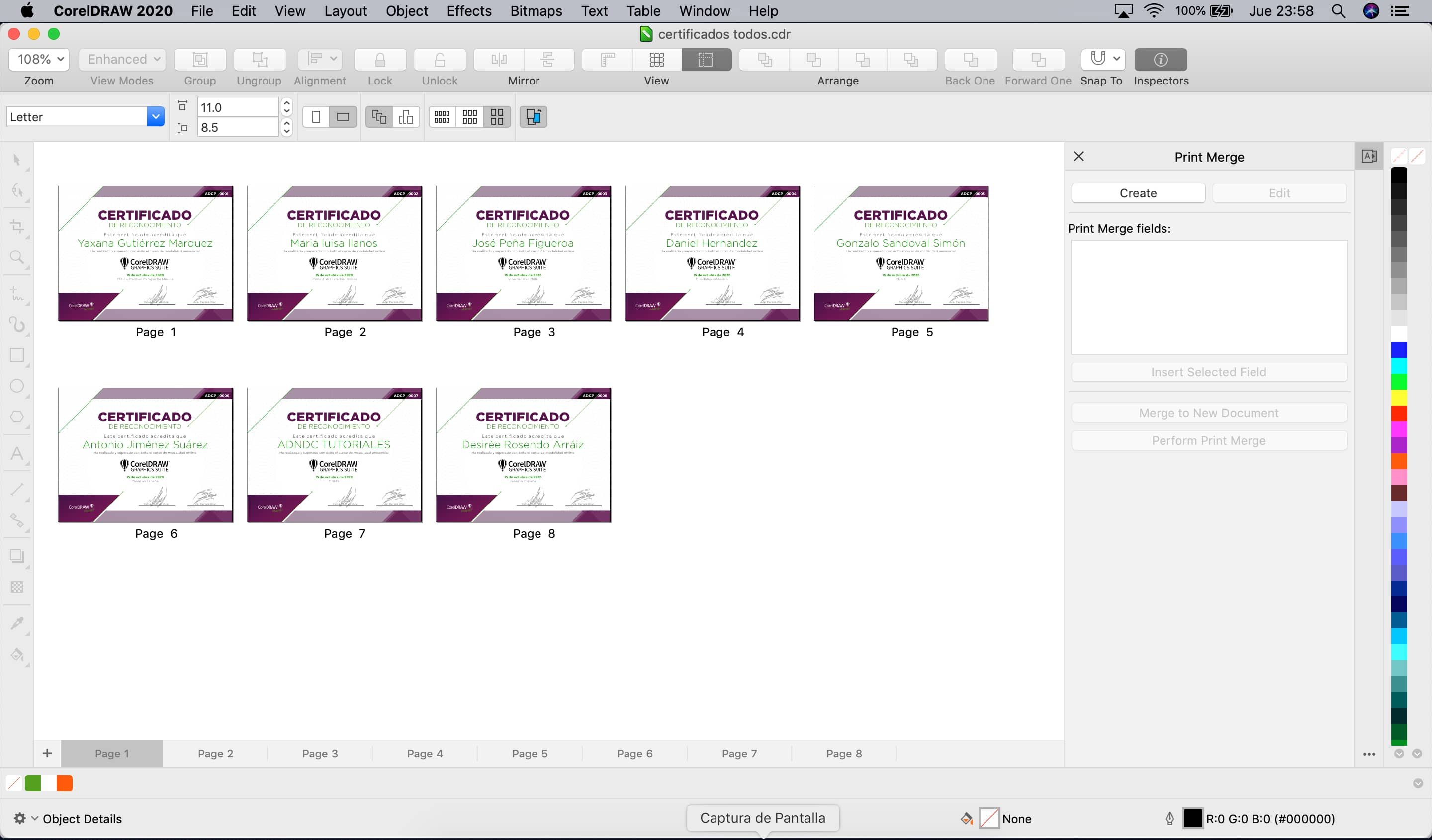
Final Recommendation
In this exercise we have no problem merging into a new document because it is only a few pages, but what if we had 500 or 1000 certificates the file could become uncontrollably heavy. I recommend before merging to new document you take the following steps:
Before merging to a new document, move the elements of the design to a Master Layer and leave only the fields if possible. This will ensure that the content is repeated throughout the document but does not add additional weight to the file.
This process may seem tedious the first time, but in reality, it is something that with a little practice can be finished in a couple of minutes. You can also import the database directly from Excel if it is saved in a CSV format and CorelDRAW will recognize each column as a merge field.
The more you learn about the tools available to you, the more processes you will be able to automate. Leaving you free to focus on the design, which is what we do best.
